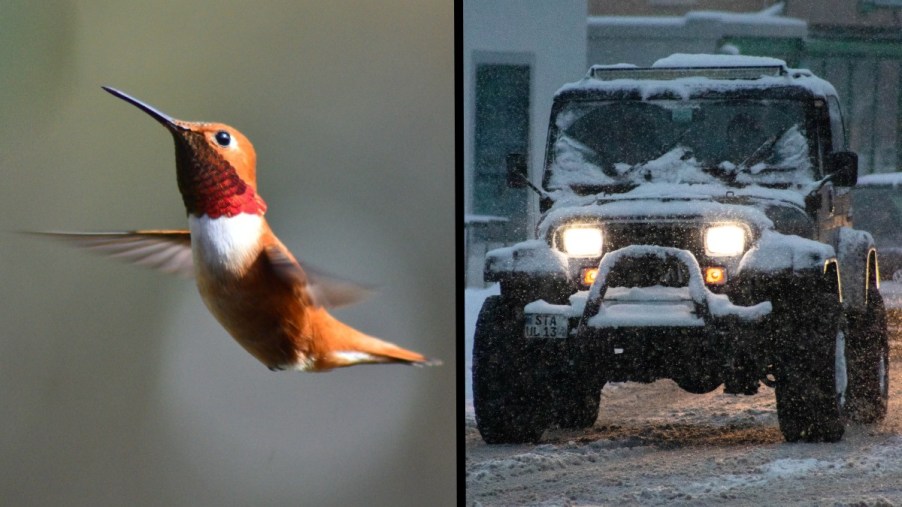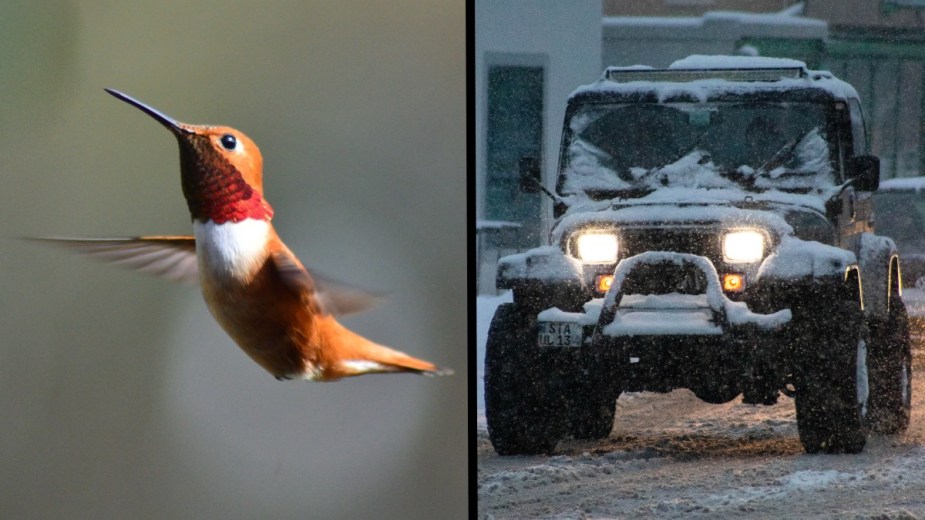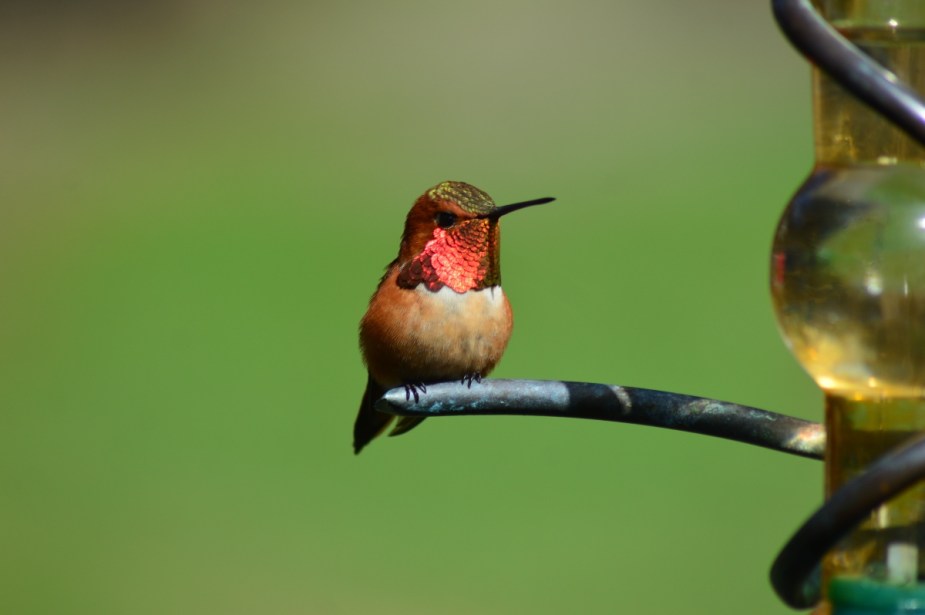
Hummingbird Hitches 500-Mile Ride in Car to Migrate South for Winter
When the worlds of cars and animals come together, interesting things can happen. Previously, we covered a story about a peacock that headbutts cars because it thinks they are love rivals. There’s another one about foxes that chew vehicle parts and vandalize a town. Now, here’s one for the bird lovers. A hummingbird in Canada hitched a ride in a car for 500 miles to migrate south to a warmer climate for winter.
After snowfall, hummingbird remained in Canada long after it should have flown south

Most hummingbirds fly south to a warmer location for winter, which they typically do in August and September. However, in late October, a tiny rufous hummingbird was found flying around Prince George in northern British Columbia, Canada — long after it should have made the trek south.
As detailed by Autoblog and CBC, Clive Keen, an editor for B.C. Birding magazine, first noticed the hummingbird when Sarah, his wife, pointed it out to him in early October. Up to that point, the last recorded sighting of a rufous in the Prince George area was in September — and most had migrated south by the end of August.
Prince George was unusually warm in early fall, though, so Keen thought that the hummingbird was waiting for the first frost before flying south. However, he saw the bird again on October 26. By that time, the city already had its first snowfall, and with temperatures forecast for 5 degrees Fahrenheit, he became concerned.
Keen said: “Clearly, it wasn’t going to survive if it stayed around. I kept thinking, ‘Surely, you’re going to take the hint and head off south.’ But no, it kept hanging around in my tree.”
Concerns about the survival of rufous hummingbirds due to their dwindling numbers

Keen was especially concerned about the safety of the rufous hummingbird due to the dwindling numbers of the species. Earlier in 2022, endangered wildlife experts recommended that the rufous be assessed for inclusion on the list of Canada’s “at risk” species.
The rufous is one of the smaller species of hummingbirds. When fully grown, they measure approximately three inches long and weigh around four grams. This is “about the weight of a dime” or an “insect,” as Keen explains.
Also, rufous hummingbirds have an extensive migratory range. During the summer, they are in British Columbia and the Pacific Northwest, as well as Alaska and the Yukon. Then, for the winter, they migrate to parts of the southern United States and Mexico — with some traveling nearly 4,000 miles.
Due to this wide range, researchers at the University of British Columbia identified the rufous hummingbird as a top “surrogate species” to measure the effects of habitat loss and climate change. The survival of rufous hummingbirds depends on the health of larger ecosystems. And since these ecosystems are in peril, there has been a significant decline in the number of the tiny birds.
Keen catches hummingbird in a cage and then drives it to a warmer and safer location
When faced with the prospect of the rufous hummingbird not surviving the cold winter in Prince George, Keen turned to the birding community. With the unusual circumstances and much concern due to the declining numbers of the species, it attracted much attention from birders.
Eventually, he concocted a plan that one might see in a cartoon — trap the bird in a cage and then drive it to a warmer and safer location. Keen set up a feeder in a cage and attached a string to the door. He and his wife waited, ready to pull the string when the hummingbird arrived in the cage.
However, like in cartoons, it was initially a challenge to get the bird. It would fly near the cage and sit on the string, but it wouldn’t go inside. Finally, after two days, the rufous entered the cage. “It was an endurance test,” said Keen.
In communication with fellow birders, some people said that they could drive the hummingbird south. Others said that would help pay for a plane ticket.
However, Keen’s wife ended up making the trek. After capturing the bird in the cage, she immediately put it in her car and drove for 500 miles and nine hours to Vancouver. Compared to Prince George, which recently endured subzero temperatures, Vancouver has more moderate weather. In a park near a clump of trees, she released the hummingbird.
Susan Keen said, “What can you do? You’ve got this tiny thing. If you leave it there, it has no chance at all.”
Susan and Clive Keen hope that their actions give the rufous hummingbird a fighting chance to survive the winter. And when the temperatures warm again next year, it can hopefully migrate back to Prince George.


